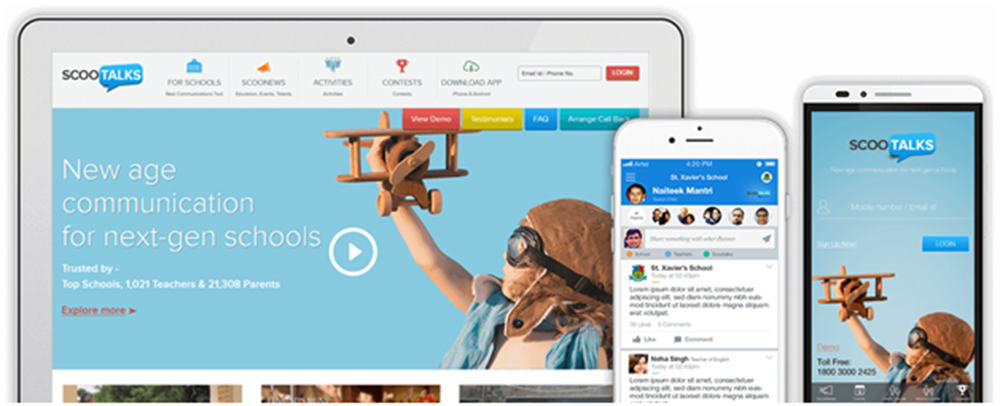May 31, 2018
With the rapid pace of change and development that is happening around the world, people are becoming more aware that they have to keep themselves updated with the rapid flow of information, and news or else they’ ll be left behind. This concern, along with other similar factors, has led to an unprecedented demand for e-learning courses. Many institutes are also realizing the importance of custom e-Learning solutions, and their effectiveness over the conventional teaching methods. All in all, e-Learning has become more mainstream over the last decade, making it evident that now is the prime time to launch your own online learning course. The steps are pretty simplistic, yet can be time-consuming, so let’s get started without any further ado.
If you haven’t already sorted out all the content that you will be using for the purpose, this should be the first step that you will have to take before actually beginning the development process of the website. Depending on the volume of the information of the course, this step may take you a few weeks or more. However, you can simplify the task by collaborating with other teachers, or taking the help of a dedicated service provider in e-Learning solutions, which could help you in the research of the content.
Once you have all the content ready, the next step would be to divide the whole of it into consumable bits. Segregating the whole course in to smaller modules should be done in a more objective manner. For example, instead of organising the units of a web front-end development course on the basis of a collection of specific information like tags and structure, try making units on the basis of the different levels of complexity like ‘Creating a static web-front’ and ‘customising with CMS’, etc. Such modules would be more specific and easier to test the learners’ skills on.
Now it’s time for you to organise all of the content in the digital format to go up on the website. For that, you should begin by selecting an authoring tool. Before making that decision, assess your ability to deal with the technical aspects of the development, as well as, your need for customisation. If you have a team, or skills to manually customise the content for media and designing, then choosing an advanced authoring tool would be a favourable option. This will give you more flexibility in the arrangement of the course. However, in case your experience in the area is limited you should opt for the authoring tools that come with in-built templates. Again taking help of an e-Learning development services provider would solve this entire step for you.
 The setup of an authoring tool will simplify the process of delivering effective learning content. However, much of its efficiency would depend on the effectiveness of your LMS or Learning Management. This is why it is extremely important that you pay utmost attention to the development of the LMS, so it is absolutely compatible with your authoring tool. The LMS should also have easy tools for you to manage the registration and other details of your students, as well as to evaluate their performance. It is vital that the LMS remain an integral solution that fulfils all your e-Learning service requirements, as well as an easy-to-manage tool, should this be a struggle then you can hire reliable developers for its development.
The setup of an authoring tool will simplify the process of delivering effective learning content. However, much of its efficiency would depend on the effectiveness of your LMS or Learning Management. This is why it is extremely important that you pay utmost attention to the development of the LMS, so it is absolutely compatible with your authoring tool. The LMS should also have easy tools for you to manage the registration and other details of your students, as well as to evaluate their performance. It is vital that the LMS remain an integral solution that fulfils all your e-Learning service requirements, as well as an easy-to-manage tool, should this be a struggle then you can hire reliable developers for its development.
Most students opt for e-Learning solutions because of the easy accessibility of the educative content. However, many others choose it for the improved interaction with the instructors and other scholars, and consider it an essential factor that has been largely missing from conventional education. Therefore, it is extremely important to embed the course with elements that encourage interaction from the students. This could be as simple as practice tests with flash cards, or as immersive as a real-time simulation.
Once everything in your website is ready with the content, navigation-flow, and the additional elements for improved engagement, it’s time to deploy the website and run dry tests on all areas of the site. It is extremely important that the course is easy to navigate for the users. To simplify things, you can also invest in the development of an introductory video that will explain how to use your website more effortlessly. Make sure that the content that you are offering students to learn, while they are away from the website, is in formats like PDF’s. Performing user testing on the website will highlight the problem areas if any, meaning you can fix these problems before any of your registered users come across them.
Hopefully, these steps have cleared up how to set up an e-Learning website. We understand that all the tasks involved in the process sound a lot easier than they actually are in practice. This is why we at Dotsquares, offer absolute as well as custom services for e-Learning solutions, so that you can avail our expertise as and when required by you. So whether you are stuck at any one of these steps or you want to create an e-Learning website from scratch, Dotsquares can help you in both cases by offering you the services that match your precise needs.
